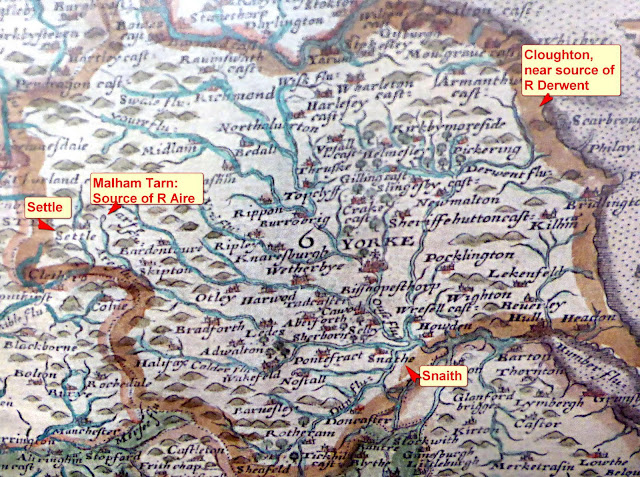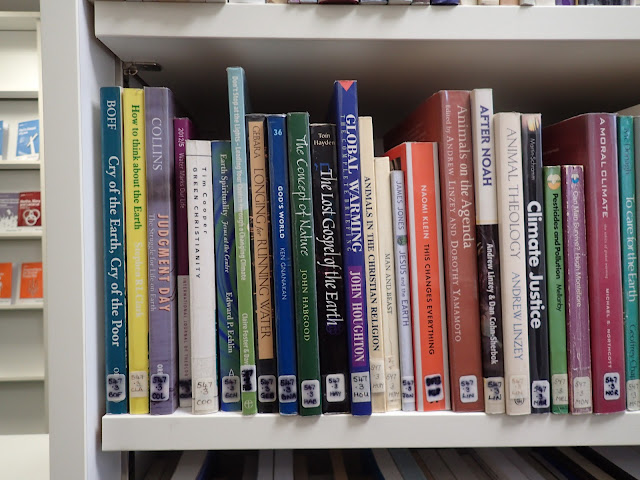On 1 March I attended a Green Christian Board Meeting at Sheffield, which included planning meetings on the Friday afternoon and Sunday morning. On the Saturday we had a Discussion Day with some local Green Christian members held at a church in Sheffield. (St John's Park)
Some statistics I live in Yorkshire (N Yorkshire is England's biggest county) and Sheffield is in Yorkshire (Yorkshire is divided into several counties now)
But both Settle and Sheffield are perched high in the Pennine Hills with no direct route in between. So it was an adventure for me.
There are c 5 million people living in Yorkshire which is the same as the population of Scotland, 0.6 million of these live in North Yorkshire (big towns Scarborough (0.061) and Harrogate (0.089 million) .
0.6 million people live in Sheffield (0.68 actually). 0.3 million live in Bradford and 0.46 live in Leeds. In between these are other big Cities and towns of the northern conurbation with population of more than 0.05 million: York, Doncaster, Huddersfield, Wakefield, Barnsley, Castleford, Dewsbury.
In comparison 7.5 million people live in London, or 9 million, according to source - and London is the 37th biggest city in the world.
There are three parts to the report:
1. The journey - always an adventure for me.
2. The stay at the Church Army Centre at Sheffield called the Wilson Carlisle Centre (I recommend it as a good place to stay if you are in Sheffield)
3. The lichens and wild plants of the St John's Park Church churchyard, (actually owned by Sheffield Council now I think) - written as a separate blog post
----
1. The journey - always an adventure for me. Plus "A sense of place and the rivers of Yorkshire"
The previous week I had travelled by car c100 miles east (ENE) (almost 3 hour driving) across Yorkshire to Cloughton, near Robin Hood's Bay on the East Coast near the source of the River Derwent which flows west inland into the Ouse south of York . It was for a British Lichen Society Meeting.
Next weekend I will be travelling 40 miles by train to Leeds for a meeting of the Yorkshire Naturalists Union. (I live seven miles from the source of the river Aire and Leeds is on the Aire which flows east into the Ouse. (Providing the train runs of course.)
This weekend I travelled across Yorkshire 86 miles out (SE) this time by public transport: It is about 2.5 hours by car. Today I had planned to go by train . However there was a strike - So It was by bus . Here is a map of Yorkshire printed by Caxton showing the rivers
Sheffield is at the centre of the map below about at the place where the capital D or Derwent is written.
I left home at 7.:25. With my red shopping bag, white plastic bag (food rations for the journey) and rucksack. I walked (very fast) the 1.5 miles to town; caught the 7.55 bus Settle-Skipton (£2-00); with a mini gap caught the bus Skipton to Ilkley (£2-00); (I was guided in the transition between buses by Philippa a friend from Settle who just happened to be on the same bus)
At Ilkley there was a 20 minute gap. This was useful as the bus did not go from the stand as stated on Google maps. There were only three stands so it was possible to guard/watch all three stands at the appropriate time.
I caught the bus from Ilkley to Leeds - with 66 potential stops (stop. start. bend ..stop. start. bend.. bend. stop. bend. - so it seemed) (£0.0 as by now it was past rush hour and could use my senior citizens pass) to Leeds.
Then Luxury! on National Express (£6-00) from Leeds to Sheffield. Wedged into a comfortable seat, in a warm bus speeding down the motorway with torrential sleet and rain obscuring the view through the big windows.
At Sheffield, although Google maps told me there was a wealth of public transport to my destination, I put on all my waterproofs and walked.
Sheffield has a wealth of options of public transport but it is hard for a newcomer to understand. - The following morning I had to use a tram but I could not work out how to get one or where they stop. (One of the other participants turned up late at our meeting because she had got on a tram going the wrong way - so I felt even happier I had arrived walking.
For other newbies to Sheffield this is what a tram stop looks like:
I actually had an hour and a half to spare now (I had had to build that into my journey in case I messed one of the connections)
So I went to see the Exhibition "Threads of Creation" at Sheffield Cathedral. I had coffee in the tea room and chatted to a lady there. I met a Canon Richard Walton who told me a little about the history o the cathedral. Their Cathedral has a bronze Eco Church Award. I met another helpful lady who when I asked her took a picture of me standing in front of one of the tapestries.
I used google maps, it took me walking about 270 degrees around the cathedral but eventually sussed where I was and I walked to .. The Wilson Carlile centre. Here I met the committee in time to be shown to my room and then return for the afternoon meeting in a modern committee room.
Wilson Carlile (14 January 1847 - 26 September 1942) was a Christian, an English priest and evangelist who founded the Church Army in 1882
(This is different to the Salvation Army, from Wikipedia: William Booth had already seen the extreme poverty and need for unorthodox evangelism work, and since 1865 had been developing a similar mission (in 1878 given the name "The Salvation Army"), using similar "Christian soldier" metaphors, also in London slums. Church of England bishops approached Booth about the time Church Army was founded to join in their work in the slums, but he declined.[6] Both the Church Army and the Salvation Army continued to work in the slums; both had some difficulty with their parent churches (Church of England and Methodist) being able to cope with those coming out of the slums as a result of the mission work, and realised the need for alcohol-free refuges.)
They have a useful committee room.
On the Saturday we had a workshop which we held at St John's Park Church. I have written a separate Blogpost about the lichens in the churchyard there
On The Sunday morning we held a service led by Andrew our chaplain in the Chapel of the Wilson Carlile Centre.
 |
| They had a transparent lectern, like the one I saw at Coventry about 10 years ago - I really like it. |
We had more committee meetings and then left. I stayed on to browse in their well stocked library.
 |
| Grove books |



















No comments:
Post a Comment